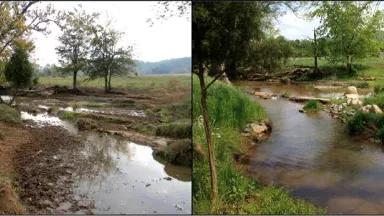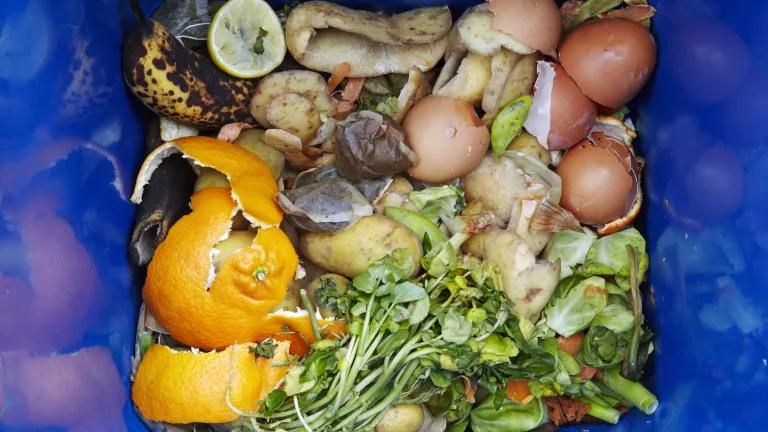Feedlot Operations: Why It Matters Where Your Grain-Finished Beef Was Produced
Why it matters that your grain-finished beef was produced on well-managed feedlots.
What is a feedlot?
The EPA defines feedlots, or animal feeding operations (AFOs), as "agricultural operations where animals are kept and raised in confined situations...that congregate animals, feed, manure and urine, dead animals, and production operations on a small land area. Feed is brought to the animals rather than the animals grazing or otherwise seeking feed in pastures, fields, or on rangeland." Feedlots become "concentrated animal feeding operations" or "CAFOs" when they reach certain size thresholds (or meet other conditions).
While a small but growing number of cattle are grass-fed, the vast majority of U.S. cattle (about 97 percent) is fattened in preparation for slaughter (or "finished") on grain (mostly corn and soy) at our nation's largest feedlots, which contain tens of thousands of animals. So the impacts of these facilities can and must be reduced and minimized now using the best science and practical knowledge to improve their design and management, even as we seek to promote and improve management of grass-based systems.
Yet beef buyers lack a way to recognize grain-finished beef produced on well-managed feedlots.
How NRDC is working to improve beef feedlots
NRDC is working to reduce the environmental and health impacts of feedlot operations by advancing management practices and technologies for containing and recycling all feedlot manure -- reducing global warming pollution and keeping it out of our rivers, streams, and aquifers. This includes devising systems to allow feedlot owners to communicate regularly with local communities and pollution control officials to manage impacts.
We are also working to minimize the impacts of beef feedlot operations on animal welfare and worker safety and ensure that antibiotics are only used to treat sick animals—not to make them grow faster or compensate for crowded, unsanitary conditions. This will help to protect the effectiveness of our most important antibiotics that doctors use to treat people.
Poorly-managed beef cattle feedlots threaten our environment, public health, animal welfare, and the health of farm workers
Some feedlots have been highlighted in the media for their graphically poor treatment of animals, workers and the environment. Yet for the approximately 97 percent of U.S. beef cattle that are finished on feedlots, it isn't even possible to verify whether the feedlots manage their manure waste responsibly or if it is polluting our air and waterways, including drinking water supplies.
Often, even pollution control officials (much less consumers) do not know basic facts about these operations, such as how many animals are produced there, how manure is handled, or even where they are located.
Additionally, there is seldom much information about how feed was produced. For example, did the feed crop producers over-apply fertilizer in a manner that contributes to the formation of aquatic deadzones? Did they use highly toxic pesticides that are endangering critical pollinators? Were production practices carbon intensive?
How you can help
By choosing to purchase beef produced in a better way, YOU are supporting the forward-thinking retailers, ranchers, and feedlots and improving the supply chain.




